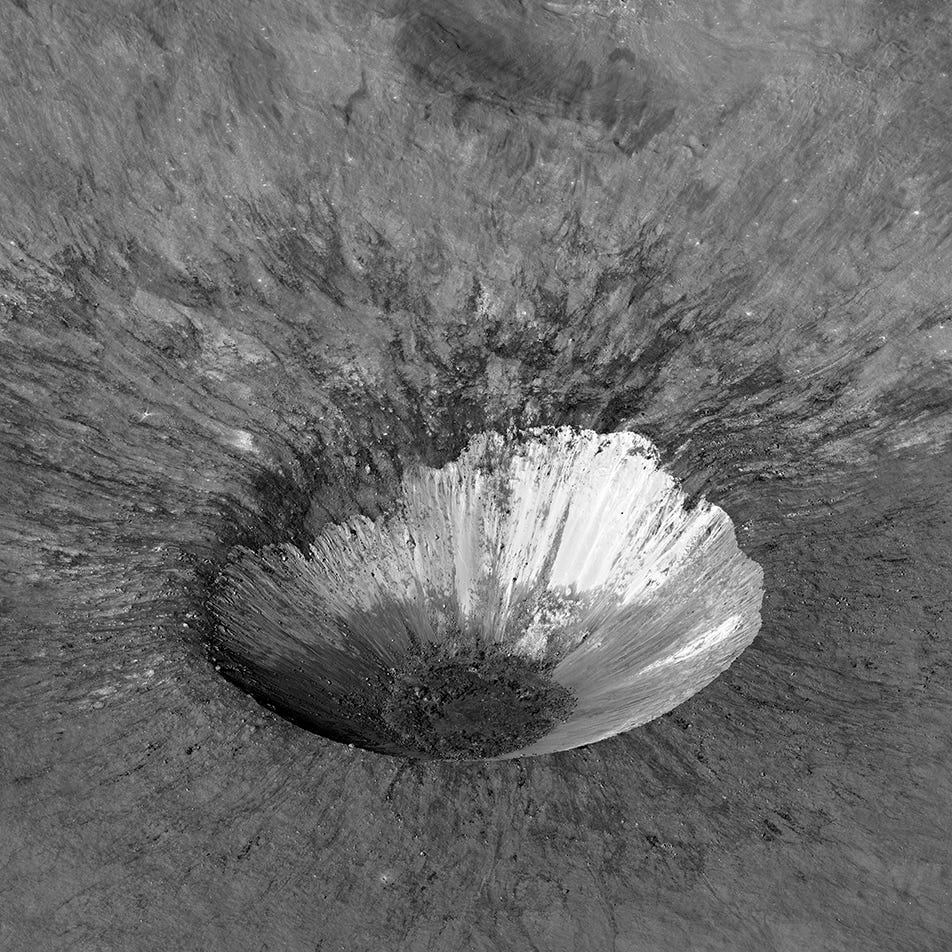What does a fresh crater on the Moon look like?
Hell.
Fresh impact craters on the Moon are a beautiful sight. Here's one named Hell Q.

Craters are one of the most common features on planetary bodies, especially ones lacking an atmosphere. Mercury, our Moon, moons of Jupiter and Saturn and many big asteroids are all riddled with impact craters. Most of these craters are old, formed during the solar system's early state when asteroids and comets were running rampant or shortly after that. These have thus been degraded over time from space weathering processes.
In the current epoch of the solar system, asteroid/comet impacts are small and happen less frequently. Thankfully, NASA's Lunar Reconnaissance Orbiter (LRO) is orbiting the Moon with a high-res camera, looking for and imaging freshly formed craters.
Hell Q crater is one such crater, formed but a few hundred million years ago at best. As with fresh impact craters, you see streaks of material coming out of the crater. This is material that was ejected upon the asteroid/comet impacting the lunar surface. You also see some dark streaks. Those are likely glass, which formed under the intense heating of the impact and quick cooling after that!
LRO's blog has dozens of fresh crater images for you to enjoy and marvel at, including a 3D picture of Hell Q you can watch with your standard pair from the store. Admittedly, I’ve spent a lot more time gazing at crater pictures rather than working.

